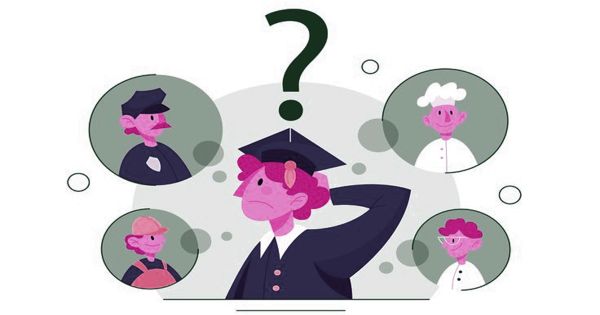“Over 92 million prescriptions for benzodiazepines are dispensed in the United States annually,” note Vanderbilt University psychiatrist Alistair J. Reid Finlayson and four colleagues in the April issue of Therapeutic Advances in Psychopharmacology, “yet little is known about the experiences of those taking and discontinuing them.”
Signs of a Disconnect
The importance of the survey is highlighted by indications of a disconnect between the widespread prescription of medications only approved for short-term (2-4 week) use and their infrequently studied long-term effects, particularly with regard to the prevalence and severity of protracted benzodiazepine withdrawal.
Finlayson and colleagues discovered that “82.9 percent reported work problems, 86.3 percent had problems with social interactions and friendships, and 88.8 percent had problems with fun, recreation, and hobbies” using data from an online survey of 1,207 participants, 71% of whom identified as female.
More than half (54.4%) of respondents indicated they had considered or actually tried to take their own life, and 46.8% claimed benzodiazepines had led to a loss of job.
In addition, only short-term use of benzodiazepines is authorized, and it may be challenging to stop using them, according to 76.2 percent of respondents. Furthermore, 5.6 percent claimed that they had “probably” not been warned.
Clonazepam (52.9%), alprazolam (41.7%), lorazepam (36.1%), and diazepam were the benzodiazepines represented in the survey (32.1 percent). Situational anxiety was cited as the primary reason for prescriptions by 43.7 percent of respondents, followed by insomnia or sleep difficulties (40.3 percent) and panic episodes (39.3 percent) in that order.
Over 92 million prescriptions for benzodiazepines are dispensed in the United States annually. Yet little is known about the experiences of those taking and discontinuing them.
Alistair J. Reid Finlayson
10.4% of individuals who completely stopped taking benzodiazepines took a year or more to taper, even if their symptoms continued after stopping, sometimes for months or years. Many had attempted tapering more than once, with 17.6 percent adding that against US Food and Drug Administration (FDA) guidelines they “did not taper, quite abruptly, but with consequences.”
Nearly a third (31.5%) of respondents said that they used benzodiazepines as directed, and more than 4 in 10 (41.2%) had increased sensitivity to chemicals and food additives. However, 98.6 percent of respondents said they had taken their benzodiazepines as directed.
A third or so had balance issues with accompanying falls and fractures after quitting, with 21% saying the issues started after commencing benzodiazepines.
More than half (51.6 percent) of respondents reported low energy months and even years after discontinuation, with similarly prevalent conditions including nervousness, anxiety, and fear (50.2 percent), sleep disturbances (49.0 percent), and difficulty focusing or feeling distracted (49.7 percent).
One in five (20.6 percent) had difficulty breathing or swallowing on a protracted basis, and more than one in four (28.3 percent) reported periods of uncontrollable crying or anger.
Other reported symptoms during or after benzodiazepine tapering included muscle weakness (36 percent); balance problems (31.0 percent); akathisia or constant pacing (19.1 percent); the whole body trembling uncontrollably (12.8 percent); acute sensitivity to light, noise, talk, and smell (42.8 percent); and “stabbing pain, burning, aching sensations, or joint pain” (34.7 percent).
Earlier Studies
“Benzodiazepine withdrawal symptoms are more common than most clinicians realize,” Reid Finlayson and colleagues report, citing a 1990 study in the Archives of General Psychiatry that found “58–100 percent (criteria dependent) of benzodiazepine users experience some type of withdrawal reactions upon discontinuation” (Rickels et al., 1990).
Further studies from 2000 and 2011 determined that “Up to 44% of long-term benzodiazepine users have persistent moderate to severe withdrawal symptoms when they attempt to discontinue the drug” (De las Cuevas et al., 2000; Lader, 2011).
Yet, the FDA waited until 2020 to add a “boxed warning” of “serious risks associated with their use,” adding: “continued use of benzodiazepines” beyond two to four weeks “had the potential to lead to clinically significant physiological dependence.” The risks also “increased with longer treatment duration and/or higher doses” (Reid Finlayson et al., 2022).
The FDA disregarded earlier evidence of serious adverse events following prolonged use and abrupt discontinuation, despite withdrawal studies from 1990, 2000, and 2011 and evidence of harms documented in 2010 and 2015 by thousands of service users and concerned professionals calling for immediate action.
More than 60 years ago, in 1961, two years after the initial tricyclic antidepressant withdrawal investigations, benzodiazepine withdrawal was first observed. At Palo Alto’s Veterans Hospital in California, Leo Hollister and two other psychiatrists studied the reactions of 36 hospitalized patients to withdrawn chlordiazepoxide (Librium).
The patients said to be chronically ill from anxiety and schizophrenic reactions had been treated with up to 600 milligrams of the benzodiazepine daily “for one to seven months (most for more than three months).”
Although 9 of the 36 were said to indicate a “clinically significant improvement” when the trial concluded, 10 of the 11 patients who were abruptly switched without their knowledge to placebo, following five months or more of drug treatment, experienced “new symptoms or signs following withdrawal.” “Six patients became depressed after being switched to placebos. Psychoses were aggravated in 5, insomnia and agitation appeared in 5, 4 had loss of appetite, and 1 was nauseated.”
In addition, Hollister and colleagues warned:
Two patients experienced severe convulsions on days seven and eight after stopping their medication. The first patient had a single prior seizure connected to earlier pharmacological therapy, while the second patient had never been diagnosed with seizures.
Twelve days after abruptly stopping taking a daily dose of 300 mg, another patient who was not a part of the formal withdrawal trial had two fresh, severe seizures. He had been taking chlordiazepoxide for three months, but the higher dose range had made him anxious. On the ninth day following withdrawal, one patient began to twitch and perspire excessively.
They concluded:
Even though it can be challenging to distinguish between withdrawal symptoms and relapsing psychiatric disorders after drug withdrawal, a number of factors encouraged the earlier interpretation of the newly manifested symptoms and indicators.
First, the frequency (10 of 11 patients) of new symptoms or signs soon after withdrawal. Second, their coincidence with decreasing plasma levels of drug. Third, the existence of post-withdrawal seizures in 2 patients. Fourth, a slower onset and subtler development of this syndrome than that from meprobamate or barbiturates….If large doses of chlordiazepoxide are used, the drug should not be abruptly discontinued.
Patient Accounts
Why would the same outcomes not hold for benzodiazepines across the board?
Reporting on their own experiences taking and discontinuing the drugs, respondents to the 2022 survey were blunter about the now known harms:
“If I could think of one of the worst possible things you could do to a person,” one wrote, “it would be benzo withdrawal.” A second: “This is by far the worst thing to ever happen to me.”
A third: “Doctors misled me about my health and never once acknowledged the pills could be the reason behind any of my issues.” Yet it was “very difficult to find a health provider that will taper me off these awful chemicals.”
In warning against abrupt discontinuation, the researchers confirm a worrying lack of support over supervised tapering and deprescribing:
“Many of the large number of write-in comments from respondents described attempting to quit benzodiazepines with minimal to no support from the health care system. A few were harshly critical of health care professionals who minimized their distress or disbelieved their symptoms.”
“I’m treated like I did something wrong for taking the prescription as prescribed,” one respondent is quoted as saying, “and when I looked at medical information years ago, my doctor told me not to because I was said to be making up symptoms by reading medical information.”
In sharp contrast, the researchers note, one 2014 “systematic review of benzodiazepine taper protocols (28 studies) suggested that for older adults, a taper should reduce the dose by 25 percent every 1 or 2 weeks until the patient is drug-free” (Paquin et al 2014) and even that reduction was “probably too-rapid a tapering plan based on the experience of the respondents in this survey.”
While the 2022 study on benzodiazepine withdrawal greatly advances clinical knowledge of the disease and its long-term repercussions, neither a control group nor an attempt was made to take into account a potential nocebo effect, in which symptoms manifest exactly because they are predicted.
The survey’s participants were also self-selected, so it’s possible that their results don’t exactly reflect those of the entire community of benzodiazepines users. However, the survey results reinforce and confirm earlier studies on the disease that date back to the 1960s and were repeated as causes for concern in the 1970s and 1980s.
There is still a critical need for randomized controlled research to confirm prevalence and severity months following benzodiazepine withdrawal.
As Reid Finlayson and colleagues establish clearly from their survey, protracted withdrawal symptoms from benzodiazepines are “more common than previously appreciated,” with “many patients experiencing a range of protracted and severe symptoms even years after benzodiazepines were completely discontinued.”
















